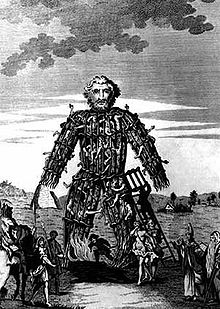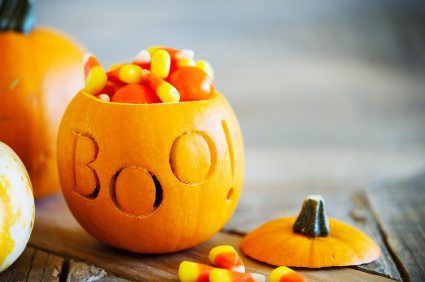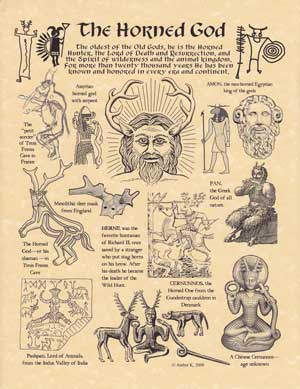Halloween is a holiday celebrated on the night of October 31. The word Halloween is a shortening of All Hallows’ Evening also known as Hallowe’en or All Hallows’ Eve.
Traditional activities include trick-or-treating, bonfires, costume parties, visiting “haunted houses” and carving jack-o-lanterns. Irish and Scottish immigrants carried versions of the tradition to North America in the nineteenth century. Other western countries embraced the holiday in the late twentieth century including Ireland, the United States, Canada, Puerto Rico and the United Kingdom as well as of Australia and New Zealand.
On October 31st, tens of millions of Americans will celebrate Halloween by going trick-or-treating or by attending costume parties. For most people, Halloween is a fun evening of dressing up and eating too much candy, and it is a holiday that is becoming more popular than ever. According to a recent report from the National Retail Federation, seven out of every 10 Americans plan to celebrate Halloween this year. That is the highest level that the National Retail Federation has ever recorded. This year, it is being projected that Americans will spend $6.86 billion on Halloween. Every year Halloween just keeps getting bigger and bigger. But there is also a dark side to Halloween. It is not “politically correct” to talk about this, but the truth is that the way that many people choose to celebrate Halloween is the kind of stuff that real life nightmares are made of.
Source and read more at: endoftheamericandream, halloweenhistory
Known History:
Halloween or Hallowe’en (/ˌhæləˈwin, –oʊˈin, ˌhɒl–/; a contraction of “All Hallows‘ Evening“), also known as All Hallows’ Eve, is a yearly celebration observed in a number of countries on 31 October, the eve of the Western Christian feast of All Hallows’ Day. It initiates the triduum of Hallowmas, the time in the liturgical year dedicated to remembering the dead, including saints (hallows), martyrs, and all the faithful departed believers.
According to many scholars, All Hallows’ Eve is a Christianized feast initially influenced by Celtic harvest festivals, with possible pagan roots, particularly the Gaelic Samhain. Other academics maintain that it originated independently of Samhain and has solely Christian roots.
Typical festive Halloween activities include trick-or-treating (or the related “guising” or “trunk-or-treating“), attending costume parties, decorating, carving pumpkins into jack-o’-lanterns, lighting bonfires, apple bobbing, visiting haunted attractions, playing pranks, telling scary stories, and watching horror films.
Today’s Halloween customs are thought to have been influenced by folk customs and beliefs from the Celtic-speaking countries, some of which have pagan roots, and others which may be rooted in Celtic Christianity. Indeed, Jack Santino, an academic folklorist, writes that “the sacred and the religious are a fundamental context for understanding Halloween in Northern Ireland, but there as throughout Ireland an uneasy truce exists between customs and beliefs associated with Christianity and those associated with religions that were Irish before Christianity arrived”. Historian Nicholas Rogers, exploring the origins of Halloween, notes that while “some folklorists have detected its origins in the Roman feast of Pomona, the goddess of fruits and seeds, or in the festival of the dead called Parentalia, it is more typically linked to the Celtic festival of Samhain“, which comes from the Old Irish for “summer’s end”. Samhain (pronounced sah-win or sow-in) was the first and most important of the four quarter days in the medieval Gaeliccalendar and was celebrated in Ireland, Scotland and the Isle of Man. It was held on or about 31 October – 1 November and kindred festivals were held at the same time of year by the Brittonic Celts; for example Calan Gaeaf (in Wales), Kalan Gwav (in Cornwall) and Kalan Goañv (in Brittany). Samhain and Calan Gaeaf are mentioned in some of the earliest Irish and Welsh literature. The names have been used by historians to refer to Celtic Halloween customs up until the 19th century, and are still the Gaelic and Welsh names for Halloween.
Samhain/Calan Gaeaf marked the end of the harvest season and beginning of winter or the ‘darker half’ of the year. Like Beltane/Calan Mai, it was seen as a liminal time, when the spirits or fairies (the Aos Sí) could more easily come into our world and were particularly active. Most scholars see the Aos Sí as “degraded versions of ancient gods […] whose power remained active in the people’s minds even after they had been officially replaced by later religious beliefs”. The Aos Síwere both respected and feared, with individuals often invoking the protection of God when approaching their dwellings. At Samhain, it was believed that the Aos Sí needed to be propitiatedto ensure that the people and their livestock survived the winter. Offerings of food and drink, or portions of the crops, were left for the Aos Sí. The souls of the dead were also said to revisit their homes. Places were set at the dinner table or by the fire to welcome them. The belief that the souls of the dead return home on one night or day of the year seems to have ancient origins and is found in many cultures throughout the world. In 19th century Ireland, “candles would be lit and prayers formally offered for the souls of the dead. After this the eating, drinking, and games would begin”. Throughout the Gaelic and Welsh regions, the household festivities included rituals and games intended to divine one’s future, especially regarding death and marriage. Nuts and apples were often used in these divination rituals. Special bonfires were lit and there were rituals involving them. Their flames, smoke and ashes were deemed to have protective and cleansing powers, and were also used for divination. It is suggested that the fires were a kind of imitative or sympathetic magic – they mimicked the Sun, helping the “powers of growth” and holding back the decay and darkness of winter. Christian minister Eddie J. Smith suggests that the bonfires were also used to scare witches of “their awaiting punishment in hell“.
Source and read more at: Wikipedia
Occult meaning of Halloween
Halloween is here it’d be a good reminder to read into the occult symbolism behind it. I’m copying/pasting the following from my full year-round Occult & Illuminati holiday traditions post:
October 31st-November 1st: Halloween
Samhain, (aka All Hallows Eve, aka Halloween), is a three day fire festival in which sacrifices were given to fires for the sun god. Samhain is a festival for the dead, as Beltaine is a festival for the living. There are a slew of traditions that occur during this festival of Samhain from Oct 29-31st, with the culmination on Halloween night. Samhain is the Celtic lord of the dead and is considered a stag god. A stag god in the occult is always a reference to the ancient male god Nimrod. He was depicted with one horn, or multiple horns appearing as antlers like Moloch:
To understand more about this holiday, we have to revisit the information about the occult and pagans. I already explained the basis for the occult attachments to the holiday at the preface to the post, but there needs to be more explanation into the Druid priesthood. The Celtic people came to the British Isles and had a priesthood known as the Druids during the Iron Ages. Wikipedia claims that there is little known about the Druids, while other theorists and people who have spent time with the Illuminati and/or occult claim to know the entire story. What is claimed is that the Druids held all authority in the tribes, and told the people when/who they should marry, when to go to war, etc. What is known and taken as fact is that they practiced human sacrifice (hence why we see so much sacrifice during these holidays).
The famous Stonehenge location is where the Druids would go to worship their stag god on the eight occult holidays per year (there are many Stonehenges across the globe; this one in particular is the well-known one). They would perform sacrifices at sites such as these, through barbaric rituals such as the ‘fountain of blood’ in which they’d hang a person with a rope tied tight around their neck and slit the throat to create a huge wave of blood. Druids would gather at Stonehenge on Samhain with gourds and pumpkins (originally called ‘Corpse Candles’ or now commonly known as Jack-O-Lanterns) and fill them with human fat, taken from previous sacrifices given to gods. They’d also bring cauldrons and light them on fire, warming them up for the sacrificial ceremony to be described later (spoiler alert: it’s for the tradition of bobbing for apples). The Druids would bang on the doors of local nobilities and yell “Trick or Treat” to see if the lord of the manor came to provide a ‘treat.’ A treat would be one of the servants or even household members given up for sacrificing that night. The reward for the ‘treat’ would be one of the pumpkins filled with human fat and they would light it so that everyone within the house was protected from the demons summoned on Samhain. If you didn’t give up an offering you’d get a six pointed star inside of a circle (a hexagram) painted with blood on the front door. This would be an attractive force for the demons and the people inside would be plagued with the demonic curse during Samhain.




Halloween is the night the stag god (male) takes power over the world, and remains in power through the lead up to the female spring goddess taking over again (Semiramis) on March 21st.On May 1st she is in full glory as the Earth Mother at Beltaine, while she leaves as an old lady at Halloween to start the cycle over again.
Source and read more at: illuminatiwatcher
History Channel special on Halloween (three parts):
Best Regards
TBU NEWS








